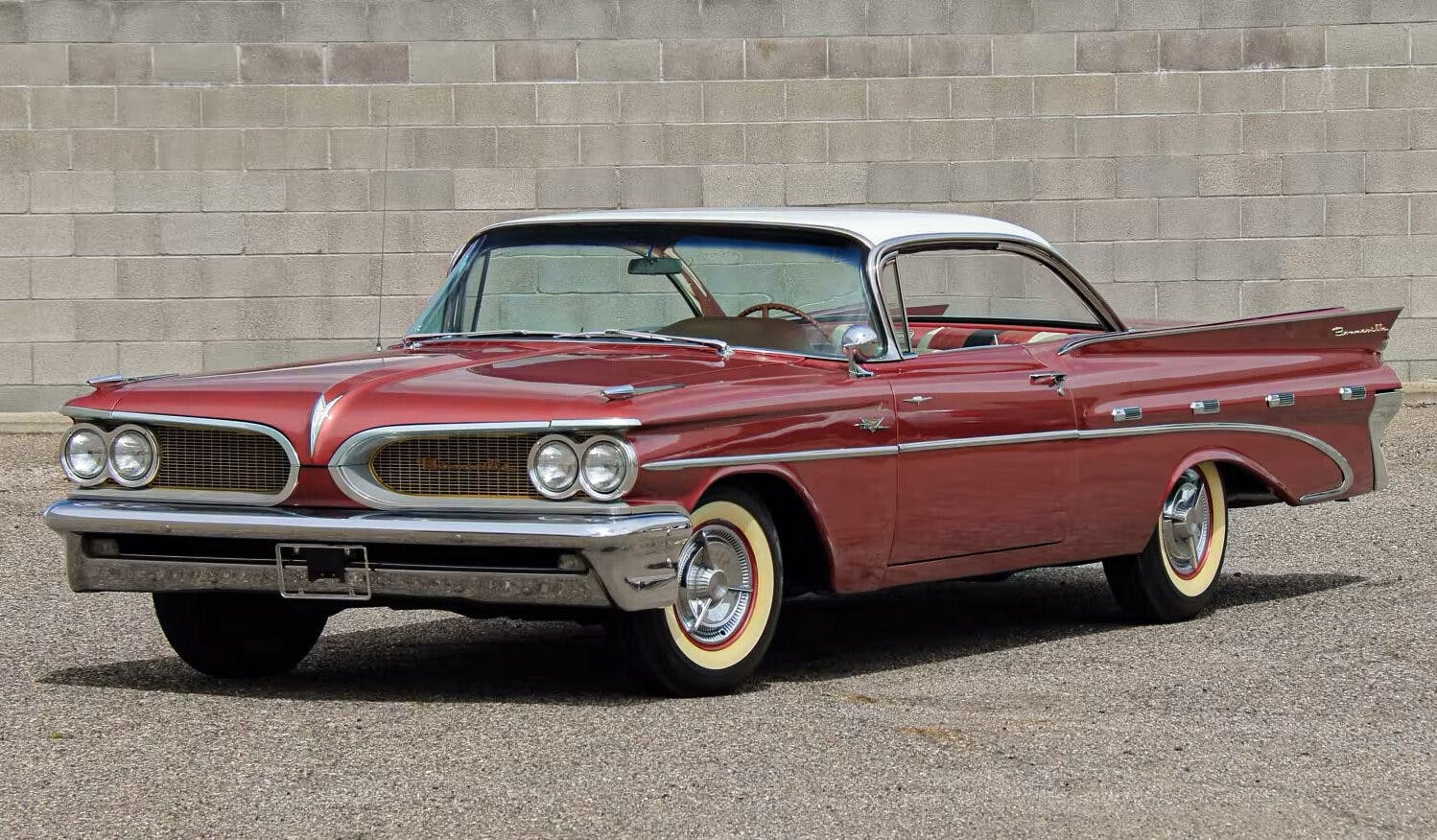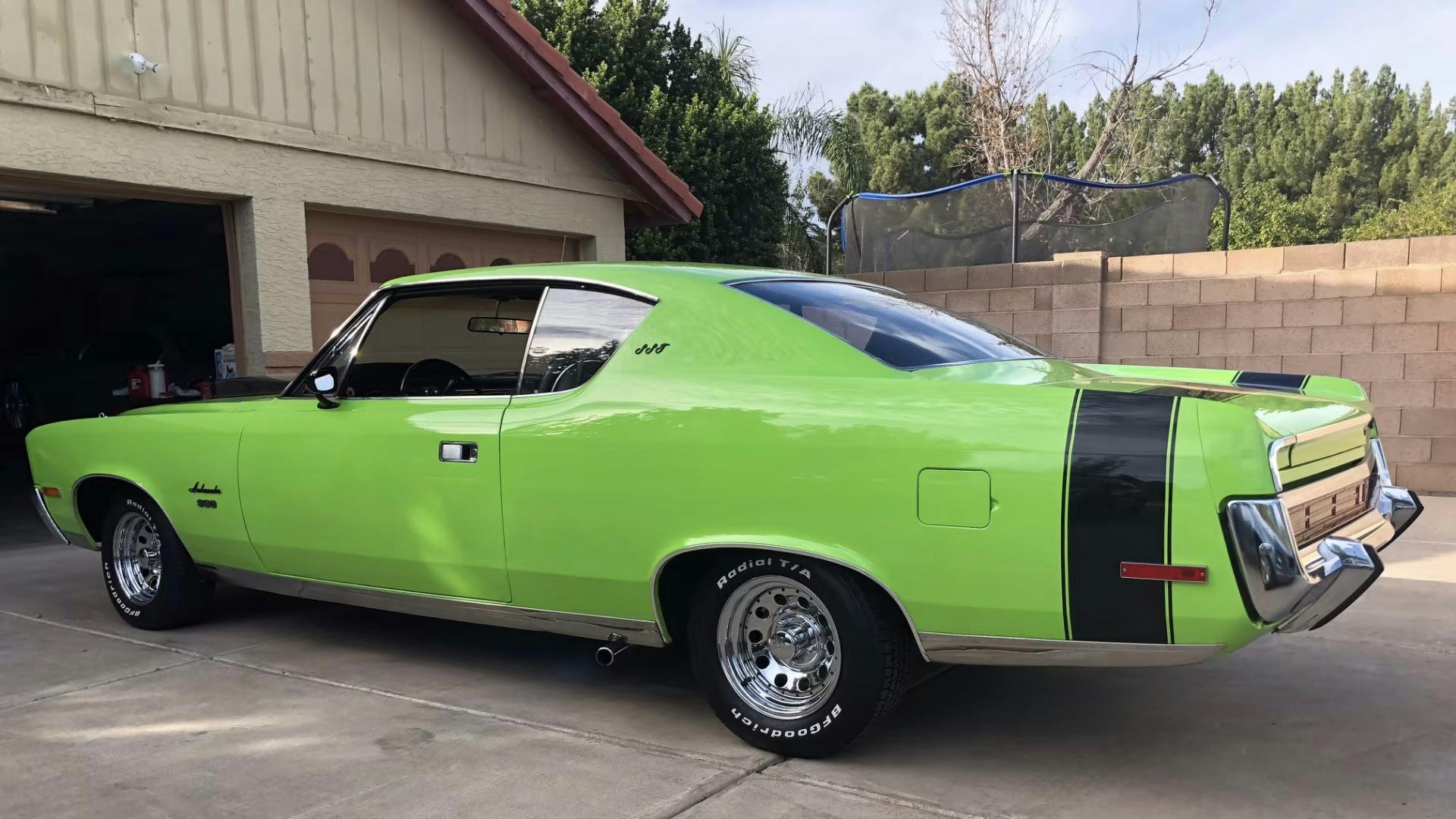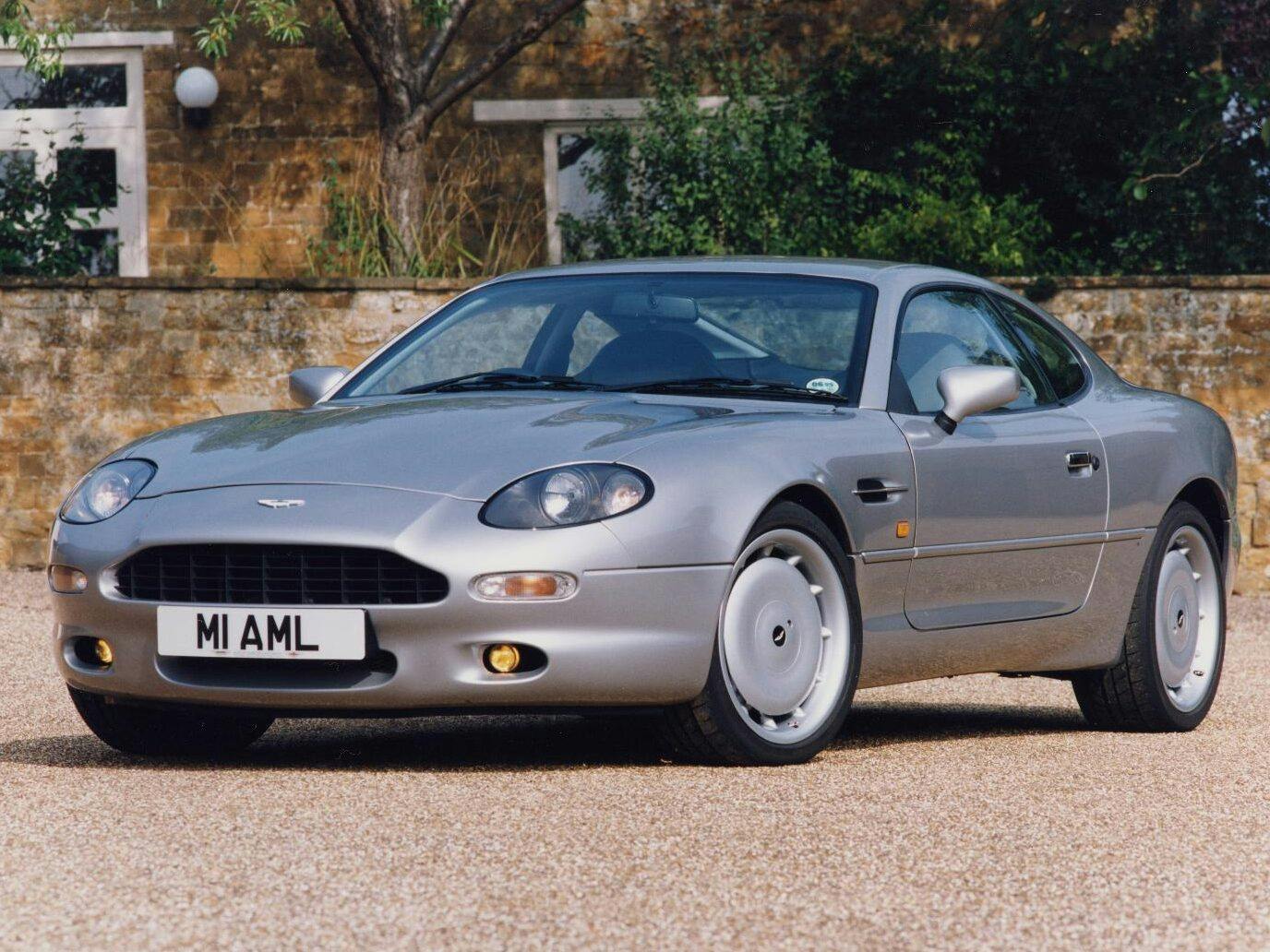Media | Articles
9 recycled automotive design elements
There’s more than one way to skin a car, but there are only so many ways to drape sheetmetal over a frame and make it look good. Popular styles rise to the top, and we covered quite a lot of them when we gave 20 examples of similar-looking cars. We’ve revisited this idea and expanded it to focus on specific design elements, rather than just the entire car, including some suggestions from reader comments. If you recall grilles or taillights or dashboards from two vehicles that seem to copy each other, let us know in the comments below.
1959 Pontiac and 1960 Edsel grilles
We’re gonna start with two pairs that were suggested in our list of doppelgänger cars from almost two years ago. The short-lived Edsel brand had a rough go in its early years, thanks to a polarizing grille that is still instantly recognizable. Frequently described as resembling either a horse collar or a toilet seat, the signature vertical center portion was tossed aside for the 1960 models, which wore split grilles that looked an awful lot like those on Pontiac’s 1959 models. The result was a stylish, understated design that looks particularly good as a wagon, in our opinion.
Unfortunately, 1960 marked the final year for the Edsel brand, so we didn’t get to see Ford apply Edsel styling to the Falcon, as was planned. We got the Comet instead, so things worked out just fine. But can you imagine if the brand had survived a few more years, and we got to see Edsel’s take on the Mustang?
1960 Pontiac and 1961 Dodge Lancer grilles
When Dodge launched the Lancer line in 1961, to give the brand a version of the Valiant, the automaker made some major leaps in design. The greenhouse was unlike anything else on the market—the influence of Exner was clear. The front, however, did have a strong resemblance to the full-size Pontiacs of the previous model year. The horizontal grille slats and a protruding shield shape look good on both vehicles, and both also have prominent horizontal body lines that start at the leading edge of the fender and terminate mid-door. Aside from those similarities, however, there’s really no mistaking the cars for one another.
1968 Mopar C-body and 1970 AMC Ambassador C-pillars
We love how much a car’s entire look can be transformed by changing just the roof. Some cars look good as convertibles and fantastic as coupes, and vice versa, but some cars were offered with sportier or more formal rooflines that really were their best looks. Dodge, Chrysler, and Plymouth C-bodies were available with a sleek hardtop in 1968 that made the otherwise conservative cars look much more like overgrown muscle cars. In 1970, AMC added a very similar roof to its Ambassador, with a similar effect.
1968 Olds Toronado wheel flares and dozens of early 2000s cars
This one was suggested by our own Stefan Lombard, who pointed out the Tornado’s wheel flares were oddly similar to those found on a 2004–08 Nissan Maxima and also later Altimas. Other cars from the era have similar shaped flares with a flat, vertical face that follows the wheel opening.
1970 Pontiac Trans Am and 1972 Porsche Carrera ducktail spoiler
Form follows function, and this shape works as intended to break up the flow of air over the rear of a fastback roofline. This one’s also from Stefan Lombard, who saw the similarities in the two cars and it led us to gather two fantastic examples for a retro comparison.
C4 Corvette and Mk IV Supra interior
There were plenty of Supra fans who pointed out that the C7 Corvette’s dash resembled the driver-focused cockpit of the MK IV Supra. Go just a bit further back, and you can see that the Corvette team was looking at the later C4 for inspiration, as the dash was redesigned for the 1990 model year. If you want a more recent example of Corvette raiding its own design bin, note the strake on the front of the C8 that divides the lower grille opening, and then look at the split front bumper on the C2.
2003–2010 Dodge Viper and 2006-2010 Pontiac Solstice interior
Whether you believe there were three or five generations of Viper, you can probably agree that Pontiac cribbed some elements from the famous snake’s interior when it made the Solstice. The powertrains couldn’t be more different, but the basic shape for the center stack and the vent placements is pretty spot-on for both of these sporty cars
Nearly every Aston Martin ever, and the 2013+ Ford Fusion grille
This one was talked about all over the automotive sphere when the 2013 Fusion debuted. The shapes are different—Aston Martin’s a grille opening features concave curves on its top edges—but the comparison is definitely warranted.
1993 Pontiac Firebird and 2021 Porsche 911 GT3 heat extractors
As soon as the 2021 Porsche 911 GT3 debuted, we had a funny feeling we’d seen a similar hood treatment. The twin heat extractors gave us serious fourth-gen Firebird vibes, and when we pointed it out, Hagerty’s Porsche faithful came out of the woodwork to call us crazy. Two years later, and the extractors still look similar to us.
***
Marketplace
Buy and sell classics with confidence
Check out the Hagerty Media homepage so you don’t miss a single story, or better yet, bookmark it. To get our best stories delivered right to your inbox, subscribe to our newsletters.






































Don’t forget 58 Edsel taillights and grille. See 70 Pontiac for use of both.
The taillights, perhaps they were the first horizontal blips on a car. View them on…. well just for starters: 95-2002 Cavalier, Camaro, Corolla, aforementioned 70 and other Pontiacs, everything CUV now.
Buick’s wall to wall taillights used on everything: Lincoln, Dodge, Chrysler, Imperial, Fords, Mercurys, Chevrolets.
Rear views used to be as brand defining as front grilles. Today they’re just after thoughts.
You got that right. Angles going everywhere and the tail lights look like upside down check marks. And most SUVs use the big, ugly “open fish mouth” grille that started with the Toyota and Lexus SUVs.
I like looking at brand new Subraru’s. They remind me each year of what other vehicles looked like 10 years earlier.
Chrysler borrowed heavily from Pontiac and GM styling elements during the 60’s and 70’s. Coke bottle sides. Chrome surround front bumper from the Firebird shows up on the Charger, Roadrunner and Super Bee in 70-72. C pillars from 66-67 GM A bodies on the 68-69 Charger. Rear bumper design from 68 GTO on 72 Roadrunner. There are more.
Add one more….The ’55-’57 T-Bird and Sunbeam Alpine. Not a coincidence …Same designer worked for Ford, and later Rootes of England.
I was expecting to see the Lotus Elan and the Mazda Miata. Mazda free admitted to taking a lot from the “classic British sports cars”.
I just hope no one copies the grilles for late model Silverado 2500’s. Those trucks are just plain ugly!
The S550 Mustang was a flat out copy of the Aston DB9. Look at them in profile- and the grill is just so blatant, lol. I guess Ford had rights to the design since they owned Aston during the DB9 era but such a rip-off.
’57 DeSoto and ’58 Ford.
Although lot’s of people referred to the 1968 Opel GT as a “mini-Corvette”, the GT was introduced the same year as the redesigned Corvette nose, so the design must have been independently done. The earlier Corvettes did not have the very pretty sloping nose that both 1968 cars introduced. No, I don’t own either one … just an interested observer.
Well, since GM owned Opel while all of this styling was being carried out, I don’t doubt that there was all kinds of crossover of ideas, sketches, etc. I don’t buy the “independently done” theory.
Notice how Pontiacs are mostly mentioned and shown in this article, that`s because they were always stylish cars unlike the cookie cutter cars who copied them. Look at the cars of today the rear ends on them look all the same with the slanted tail lights. Tough to tell a Toyota, Nissan, Hyundai, Kia, etc. etc. from each other.
`always saw the distictive tall upsweeping ducktail trunk lid upper edge on the rear of `67 Shelby mustangs,
as Carroll S. starting the modern spoiler trend, which is now seen on all types of vehicles just about everywhere.
You missed the most obvious–New Bronco and the original IH Scout
I think the Firebird and the 911 GT3 combo is my favorite here.
I’m surprised you didn’t mention the elephant in the room, that everybody is copying, even to this day and ad nauseam – the offset air intakes of the original Ferrari 360 Modena (required for technical reasons) – while today seemingly it is de rigueur for everyone to have some sort of an air intake on the front corners, whether fake or not. Also comparing the Nissan Maxima with the Toronado in terms of wheel arches – is lame. How about the Challenger widebody?
Third Gen Trans Am/GTA “whale tail” spoiler was apparently licensed to GM from Porsche.
That one has a funny history. Find a photo of an ’82 Trans Am MSE from Mecham Racing (they won the mfg cup that year with a Trans Am driven by Elliot Forbes Robinson and sold street versions thru a dealer contract), with a custom whale tail spoiler. I met the guy who designed and hand built the prototype for that on the race and street cars. I forget his name, but he was a fiberglass genius who had worked at Lotus for years, doing development. After the contract with Mecham ended (Steve Saleen drove the next year, and didn’t win, but did leave and get a similar deal with Ford to sell modified Mustangs at dealers, with whale tails), Pontiac used the MSE tail (slightly modified for mass production) on all Trans Ams until the end of Pontiac F body production. That’s more stolen than borrowed.